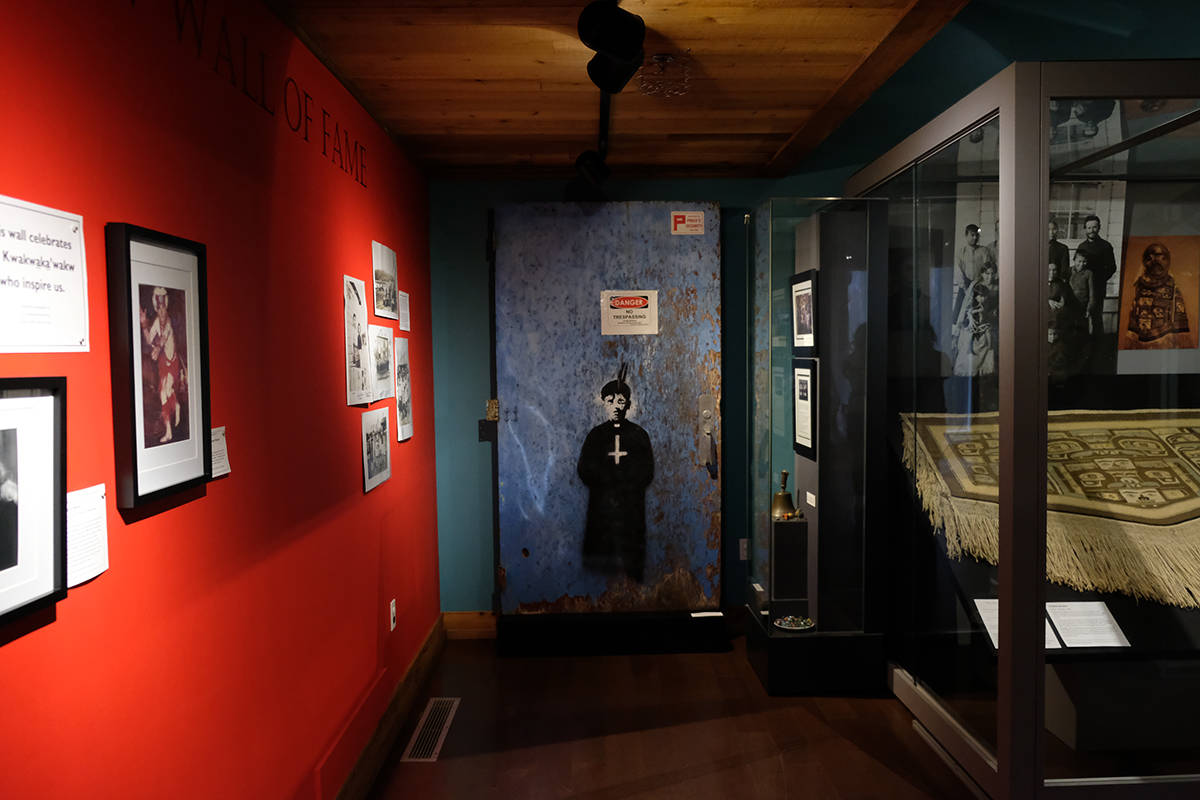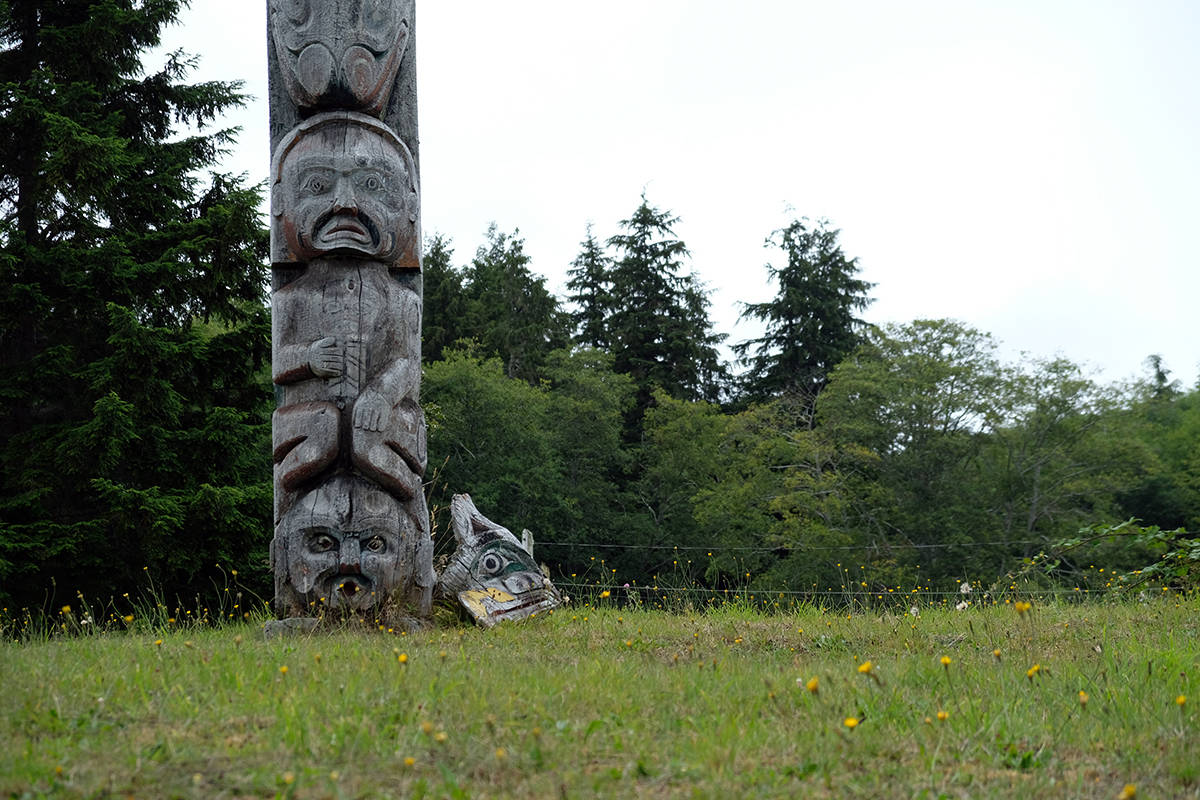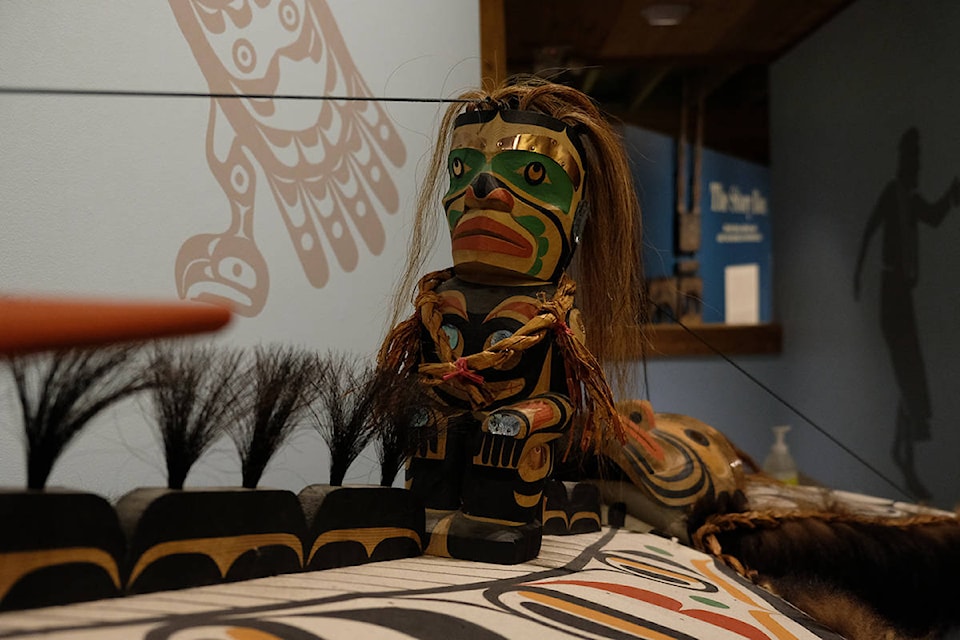The scent is unmistakable. Warm, dry cedar stills the air in the potlach room that’s full of Kwakwaka’wakw masks and regalia. If it weren’t for electric lights and the hum of climate control, it would feel like time didn’t exist.
The potlach room at U’mista Cultural Centre on Cormorant Island (home of the ‘Namgis First Nation) is designed somewhat like a big house. Museum-goers enter from the back and work around the room counter-clockwise, like a dancer would at a potlach ceremony.
What really sets this place apart from other museums is that everything on display was returned to the Kwakwaka’wakw people after being confiscated by the Canadian government in 1921.
Potlach had been made illegal in 1885, but the Kwakwaka’wakw people refused to stop practising something so central to their way of life.
RELATED: Victoria museum releases more than 16,000 historical images of Indigenous life
RELATED: Indigenous repatriation projects get new funding from BC government
In 1921, Dan Cranmer from the ‘Namgis First Nation hosted a huge potlach feast.
The local Indian Agent William Halliday showed up with reinforcements and arrested 45 people, sending 22 to prison. They were charged with various things — dancing, giving speeches, and handing out gifts.
Regalia were confiscated and distributed among museums and private collectors, including the superintendent general of Indian Affairs.
After the potlach ban was lifted in 1951, Kwakwaka’wakw people began asking for their things back. Museums held the bulk of the collection and agreed to return them once suitable museums were constructed.
This is what spurred construction of the U’mista Cultural Centre. U’mista in the Kwak’wala language refers to when someone who had been captured in a raid was returned to their people. Having the ceremonial items returned is a form of u’mista.
The museum is intensely local and alive. Carvings, weavings, masks and art are not owned by the museum, or on loan from collectors. Instead, the owners are Kwakwaka’wakw people whose family members created the items. Information about them is made up of community knowledge and memory.
Where that knowledge has been partially lost, the museum card asks for input from anyone who does know.
Living Anthropology: Boas and Hunt
Anyone who’s studied a little bit of anthropology will know the name Franz Boas. He was a pioneer of modern anthropology, and most of his work was based here with Kwakiutl and Kwakwaka’wakw people. His book, The Social Organizations and Secret Societies of the Kwakiutl Indians (1897) was monumental in the field.
He could not have done it without his associate George Hunt, a Tlingit-white man who was raised at Fort Rupert where he learned to speak Kwak’wala.
One room at U’mista has a temporary exhibit that takes that 1897 book, and brings it to life in the context of the living Kwakwaka’wakw people. It fleshes out what really goes on, corrects mistakes Boas made, and puts the living voice of Kwakiutl people back into their own stories.
“Boas, like most anthropologists at the time, was certainly motivated by an urge to ‘salvage’ what he presumed to be the vanishing traces of authentic Indigenous culture before Native people would be assimilated into North American society,” said anthropologist Aaron Glass, who helped build the exhibit, in a conversation with Hunt’s great-granddaughter Corrine Hunt, a renowned artist who also contributed to the exhibit.
Boas worked with the Kwakiutl and Kwakwaka’wakw people during the time that potlach was banned, so while his intention may have been to preserve their culture for posterity’s sake, he and Hunt ended up creating a repository of knowledge that has helped people recover knowledge the Canadian government tried to quash.
Beside U’mista Cultural Centre at Alert Bay it is the now-empty field where St. Michael’s residential school stood. The building was demolished with a healing ceremony in 2015.
For more news from Vancouver Island and beyond delivered daily into your inbox, please click here.


